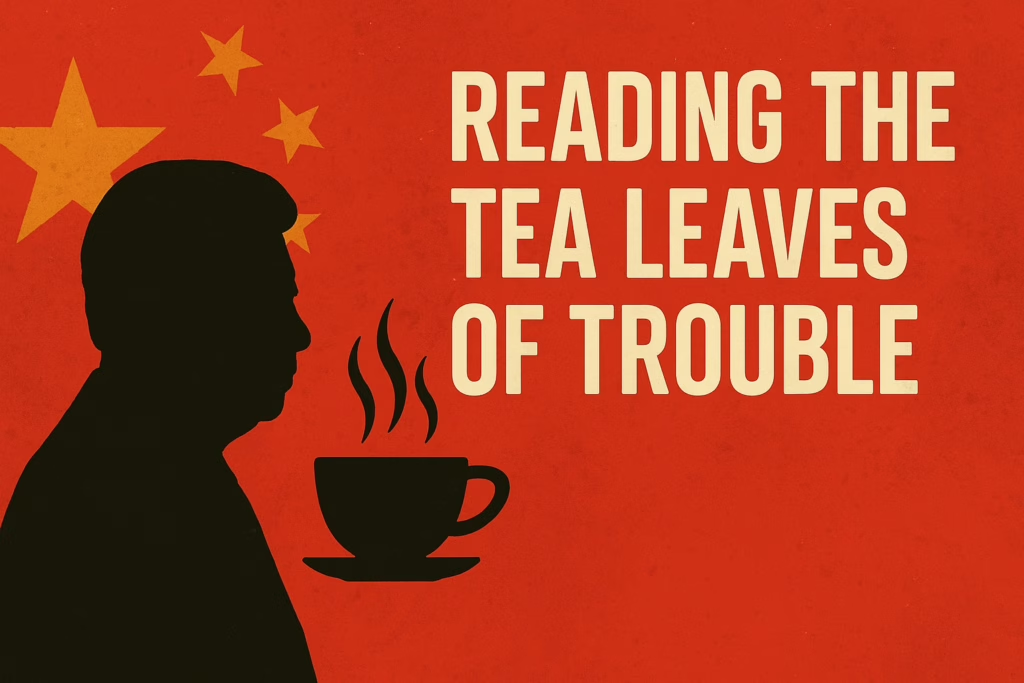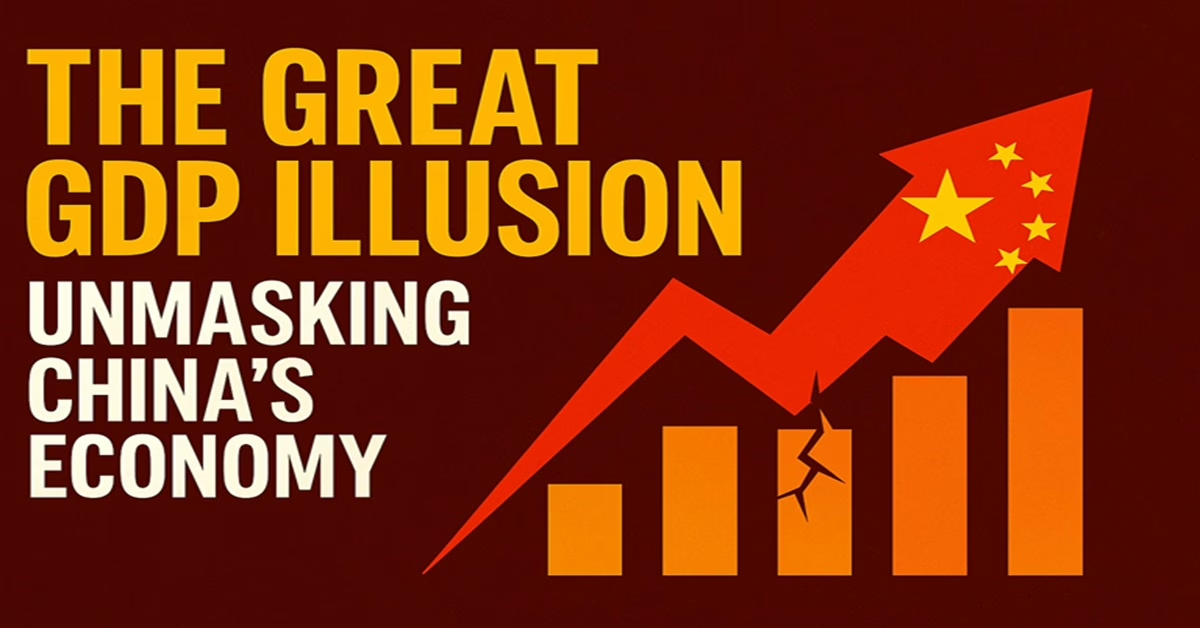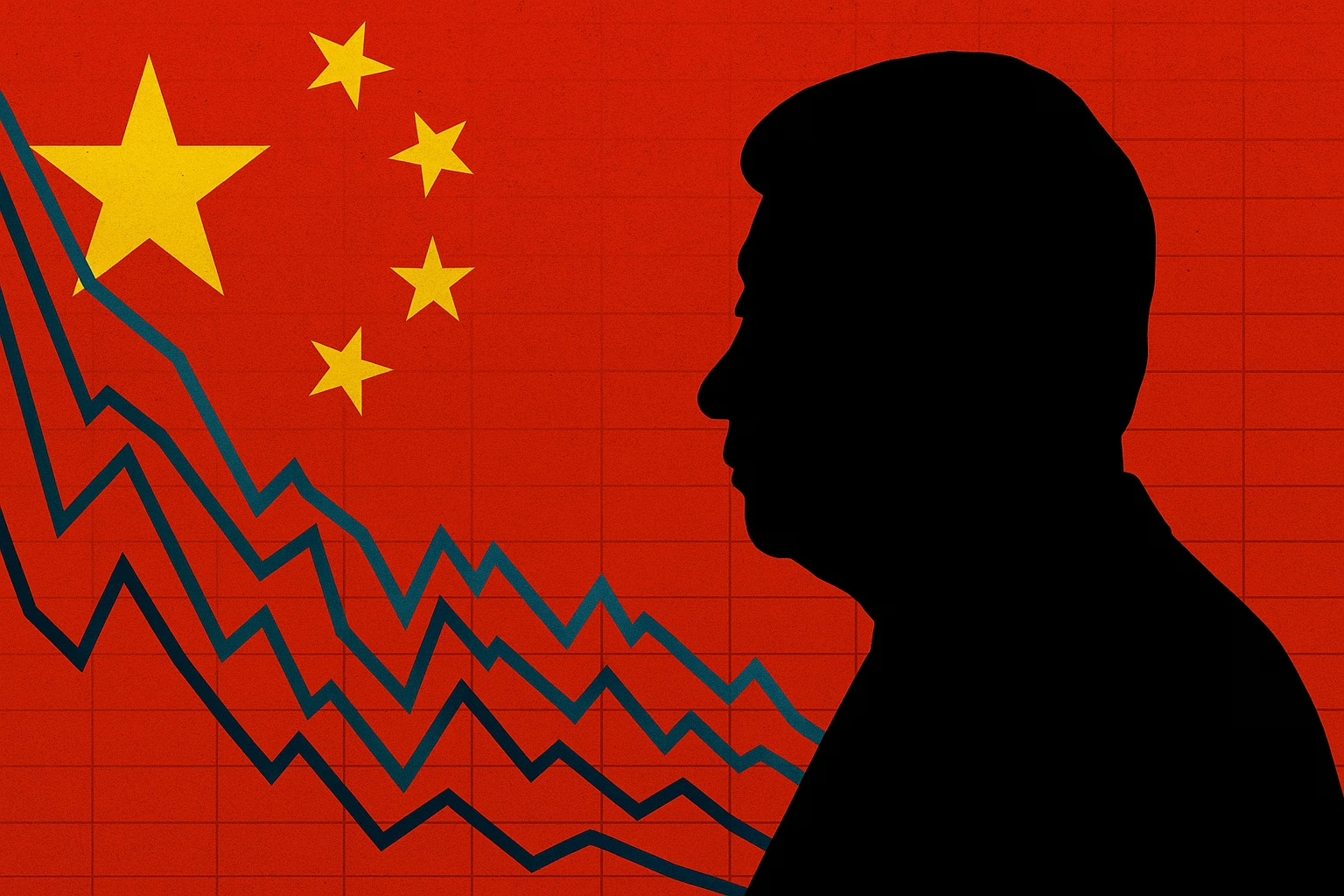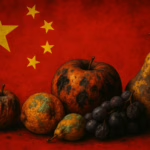If you listen carefully to Xi Jinping, you can hear it: the faint rattling of chains in the Chinese economy’s engine room. Publicly, China’s president projects confidence – he’ll proudly announce that GDP growth is “on course” to hit targets and that the economy is “stable and progressing.” But between the lines of official speeches and state media platitudes, Xi has been dropping hints like a cautious fortune-teller Xi Jinping economic unrest warning of storms ahead. It’s an open secret that all is not well in the world’s second-largest economy, and even the man at the helm is signaling concern in his characteristically cryptic way. In a political system where candor can spark panic, Xi’s hints come shrouded in euphemisms and analogies – think “black swans” and “grey rhinos” instead of “recession” and “crisis.” Decoding these signals has become a cottage industry for China watchers, and for good reason: Xi’s veiled warnings may be the closest Beijing comes to admitting it has an economic headache.
Cracks in the Great Wall of Optimism
Officially, Xi Jinping’s narrative is that China’s economy is resilient and on track. In his 2024 New Year address, he assured the nation that growth was steady and would reach around 5% in 2025, despite headwinds from abroad. State media dutifully echoed that everything was humming along. But even in that carefully scripted message, Xi couldn’t avoid nodding to the “new situations” and challenges facing the economy. He spoke of “uncertainty in the external environment” and “pressure to transform growth drivers” – relatively mild language, but coming from a leader who usually sticks to triumphalist slogans, it stood out. Translation: exports are sputtering, the old property-and-infrastructure growth model is exhausted, and China needs new engines of growth fast. By acknowledging these challenges at all, Xi signaled that his economic team is uneasy. Indeed, behind closed doors, the Communist Party’s Politburo had just convened in December 2024 and hinted at the strongest commitment to stimulus in a decade. For a government that had been preaching fiscal discipline and “deleveraging,” the sudden pivot to aggressive stimulus was telling – it was basically an alarm bell in policy language.
Other signs of Xi’s jitters abound. Take the colorful menagerie of metaphors he and his officials have invoked. Xi has repeatedly warned cadres to beware “black swan” events and watch out for “grey rhinos” – code for unpredictable crises and obvious-but-ignored threats, respectively. In Chinese official-speak, that’s as close as one gets to saying “we’re vulnerable to shocks.” In early 2025, state think-tanks and advisors began unusually frank discussions of worst-case scenarios, from a global recession to financial turmoil at home When Xinhua (the state news agency) starts publishing pieces about economic “uncertainties” and need for reform, you know the directive came from on high to prepare the public for bumpy roads.

Perhaps the most striking tacit admission of trouble was the government’s decision to suspend publishing youth unemployment data in mid-2023 when the rate blew past 21% – a record high. In August 2023, facing embarrassment over soaring joblessness among young people, Beijing simply halted the monthly reports. You don’t hide a number that was going in the right direction; you hide it because it’s a glaring red flag. The data blackout lasted months, a move that spoke volumes: it was more or less an admission that officials had lost control of a key metric and feared the public reaction. (By late 2024, they resumed publishing a tweaked statistic – excluding students – which magically brought the youth unemployment rate down to a more palatable ~17%. Make of that what you will.)
Meanwhile, Xi’s government has shown signs of scrambling for solutions. In 2023-2024, policies flipped and flopped in a way that betrayed a degree of anxiety. They went from clamping down on property speculation to urgently trying to prop up real estate markets with tax breaks and interest rate cuts. Tech companies that were vilified in 2021’s “common prosperity” purge were cautiously courted again by 2023 as engines of growth. By late 2024, the leadership rolled out a “massive irrigation” of liquidity into the economy – a metaphor likening stimulus to flooding fields with water. Such a heavy dose of monetary easing hadn’t been seen since the post-2008 crisis. If everything were indeed peachy as official cheerleading suggests, why break the glass and hit the emergency liquidity button? The answer lies in those unspoken worries: deflationary pressures, flagging consumer spending, and local governments strained by debt. Xi’s team wouldn’t be gushing money into the system unless they saw real risks of stall-out.
The Dragons Under the Bed: What Keeps Xi Up at Night
To understand Xi’s hints, it helps to enumerate what exactly are the dragons lurking under China’s bed (to borrow imagery from Chinese folklore). The big three economic gremlins are: a property bust, a demographic bust, and a confidence bust.
First, real estate – long the pillar and pillow of China’s rise – is in trouble. Years of overbuilding and speculative frenzy have led to ghost cities and indebted developers. In 2021, the giant developer Evergrande’s debt crisis made global headlines, but the rot runs deeper and wider. Housing sales and prices have been weak, local governments (which rely on land sales for revenue) are feeling the squeeze, and unfinished apartment towers stand as concrete reminders of broken trust. Xi’s common prosperity drive initially tolerated a deflation of the housing bubble (to curb inequality), but by 2023 the tune changed as slumping real estate threatened the broader economy. The leadership quietly eased off the property crackdown and started whispering support, like urging banks to extend mortgages and developers to ensure completion of projects. It’s a delicate dance: Xi won’t openly admit “the property sector is a mess,” but his policies and subdued rhetoric on housing betray deep concern. A collapse in real estate is a classic “grey rhino” – obvious, heavy, and dangerous.
Second, demographics. Xi doesn’t need to spell this one out; the data did it for him. China’s population shrunk in 2022 for the first time in 60 years, and the birth rate has fallen off a cliff to around 1.2 children per woman – far below replacement. Marriages have plummeted (more on that in the next article), and as a result births have too. An aging, shrinking population is a slow-burning crisis that Xi inherited but has failed to reverse. Publicly, he urges families to have more children and has rolled out incentives (from cash stipends to longer maternity leave), but the lack of enthusiasm speaks to deeper social stresses. While Xi won’t openly call it a “crisis,” he’s hinted at the “severe population challenges” in policy meetings. The specter of Japan-style stagnation haunts Beijing’s planners; in one speech Xi talked about avoiding the “middle-income trap” and not letting growth falter just because the workforce is shrinking. These bland words mask a profound worry: that China could grow old before it grows rich. Every time Xi emphasizes innovation and productivity, he’s implicitly acknowledging that demographic dividends are gone – the country needs to do more with less (workers).
Third, confidence – or lack thereof. Perhaps the trickiest problem is that ordinary people in China seem unconvinced about their economic future of late. The post-COVID rebound that Beijing oversold in early 2023 quickly fizzled. By mid-2024, consumer sentiment surveys were tepid. People are saving more and spending less, which is rational in uncertain times but unhelpful when the government wants a consumption-driven recovery. Private entrepreneurs, rattled by regulatory crackdowns, have been sitting on their hands instead of investing. Even local governments and banks, normally enthusiastic pump-primers, grew cautious as debt loads mounted. Xi has tacitly acknowledged this confidence deficit by convening high-profile meetings with business leaders – something he rarely did in his first decade in power. In late 2024, for instance, he held an economic roundtable with tech CEOs and manufacturing honchos, effectively to beg them to invest and hire. The fact that Xi Jinping, not known for chumminess with capitalists, played nice and promised “support” for the private sector is telling. It signals that he knows the state sector can’t do it alone – he needs entrepreneurs to believe in China’s story again. He even dusted off Deng Xiaoping-era slogans about reform and opening up (after years of more nationalist rhetoric) to reassure investors. Such reversals and repeated pep talks are akin to a captain shouting “all is well!” on deck, which of course makes the passengers suspect that water’s leaking below.
How Xi Manages Unrest (Without Admitting It)
While Xi’s hints point to economic doldrums, make no mistake: he’s not exactly embracing transparency. The Party under him remains tight-lipped about bad news and quick to crush overt dissent. Nonetheless, Beijing has a playbook to manage discontent, and Xi has been deploying it shrewdly.
One tool is controlled transparency. The regime will leak out just enough acknowledgment of problems to let the steam escape, but not so much that the pot boils over. For example, when youth unemployment hit painful highs, the state’s solution was to a) stop publishing the embarrassing figure, and b) simultaneously launch a propaganda campaign extolling the virtues of “gig work” and self-reliance for young people. As if millions of over-educated, under-employed youth could be mollified by slogans to “eat bitterness” and start hustling. Similarly, as small protests have flared – whether homeowners protesting unfinished apartments or pensioners upset about medical benefit cuts – authorities have often responded with a carrot-and-stick. They quietly address some grievances (e.g. pressure developers to deliver homes, tweak the health insurance rollback) while censoring discussion and occasionally arresting ringleaders. The message: we hear you, but don’t you dare organize or challenge the Party openly.
Xi also leans on nationalism as a release valve. When domestic troubles mount, the propaganda machine frequently shifts focus to external threats or grand patriotic narratives. In 2023, as economic news worsened, state media intensified coverage of Taiwan, the U.S.-China trade tussle, and China’s achievements in space and technology. By rallying the public around a sense of external danger or pride, Xi can dilute attention on internal woes. This tried-and-true tactic doesn’t fix the economy, but it can shore up legitimacy: “Yes, your apartment value fell and your kid can’t find a job, but look, we landed a rover on Mars and stood up to American bullying – be proud!” It’s a sleight of hand that Chinese leaders before Xi also employed, though Xi’s brand of it, sometimes called “wolf warrior” diplomacy when aimed abroad, has been toned down recently as he tries to mend fences for economic reasons.
Another lever Xi has pulled is the anti-corruption and discipline campaign. How does that relate to economic unrest? Well, by tightening control over officials and eliminating rivals, Xi reduces the risk that any faction might exploit economic discontent to challenge him. Over the last decade, he’s purged hundreds of cadres, ensuring that local leaders toe the line. In an ironic way, this means there’s less independent (and potentially remedial) action at local levels – everyone waits for Beijing’s directives. If the center flounders, there’s little bottom-up initiative. That rigidity can aggravate crises, but it also prevents rogue regional power bases from fomenting political unrest. Stability at all costs is Xi’s mantra, and he’s traded some economic vibrancy for political control. The problem is, an ossified political climate may now be hindering the creative solutions China needs for its economy. Even Xi has hinted at this indirectly, lamenting “bureaucratism” and urging officials to be bold in implementing pro-growth measures. When the top man has to beg his bureaucracy to act, you sense a malaise.
Global Reverberations and India’s View: Opportunity in Crisis?
Xi Jinping’s delicate dance around economic unrest doesn’t just matter for China – it matters for the world. A China under strain could react in ways that either spell opportunity or peril for other countries. As India and the globe watch China’s balancing act, a few scenarios emerge:
- Opportunity for India (and others): A China that’s economically less confident might be more inclined to avoid confrontation and seek better trade ties. Xi’s recent softening of tone with Western nations – dialing back the strident “wolf warrior” approach in hopes of stability and investment – can create a more benign international environment. If Beijing is busy firefighting at home, it has fewer resources to throw its weight around abroad. This could be good news for India, which has had border tensions with China; a China focused inward might be less aggressive on the geopolitical front (at least temporarily). Economically, if global investors sense China’s star is dimming, they may look more to India as an alternative destination. Indeed, talk of “China+1” strategies (diversifying supply chains away from sole reliance on China) has amplified amid China’s slowdown. India, with its large market and younger demographic, stands to gain manufacturing investments if it plays its cards right. We’re already seeing early signs – Apple, for instance, expanding iPhone production in India as a hedge against China’s uncertainties.
- Global Risk: On the flip side, if China’s economy seriously stumbles, no one will be fully insulated. China accounts for a huge share of global growth, so a pronounced slump (or financial crisis) there would drag down commodity exporters, rattle stock markets, and dent global trade. India could see weaker demand for some of its exports (like raw materials or intermediate goods that feed into China’s production chain) and could face cheaper Chinese goods flooding the market as Chinese firms try to export their way out of trouble. There’s also the security wildcard: a classic playbook of embattled regimes is to whip up foreign conflicts to distract domestic anger. While it’s not certain, one cannot rule out Beijing becoming more belligerent in, say, the South China Sea or toward Taiwan if internal stability feels threatened – a risk factor for regional security that India’s strategists would be loath to ignore.
- India’s Cautionary Tale: Perhaps the biggest takeaway for India is a lesson in what not to do. China’s current plight – an aging population, a debt-laden growth model, heavy-handed state intervention scaring the private sector – offers India a mirror of potential pitfalls. India can observe how data opacity and denial have hurt China’s credibility. For instance, China massaging its GDP and hiding bad stats eroded investor trust. In contrast, if India upholds transparency and reform, it can attract the very capital fleeing China’s murkiness. India has its own challenges (high youth unemployment, for one), but at least public debate is freer and data more open. Ensuring that remains the case will differentiate India positively.
In Chinese, “crisis” (危机) indeed carries the dual character of danger and opportunity. Xi Jinping’s muted admissions of economic stress are essentially acknowledgments of danger. How China navigates them will determine if any opportunity arises – for China itself to reform, and for others to fill any void it leaves. So far, Xi’s approach is to double down on control and stimulus, hoping to engineer a soft landing without ever uttering the word “crisis.” It’s a high-wire act: too much candor, and he could spook the public; too little action, and the problems fester.
For now, observers must parse Xi’s tea leaves – the subtle shifts in tone, the metaphors, the policy zigzags – to gauge China’s trajectory. It’s a bit like an ancient Chinese opera, where characters convey turmoil through measured gestures rather than open declarations. The audience (which includes the rest of the world) has to pay close attention. And if India keeps its eyes and ears open, it may not only avoid China’s missteps but also find a bright spot in the shadow of China’s economic clouds. After all, as one era’s dragon stumbles, others may find their wings.
📌 Also Read
🗞️ Khalistan Movement in Canada: Why India Must Call Out Canada Now
A sharp dive into Canada’s double standards and the growing threat of separatist politics nurtured overseas. While China’s economy may be rotting from within, Canada seems busy cultivating chaos from without.













